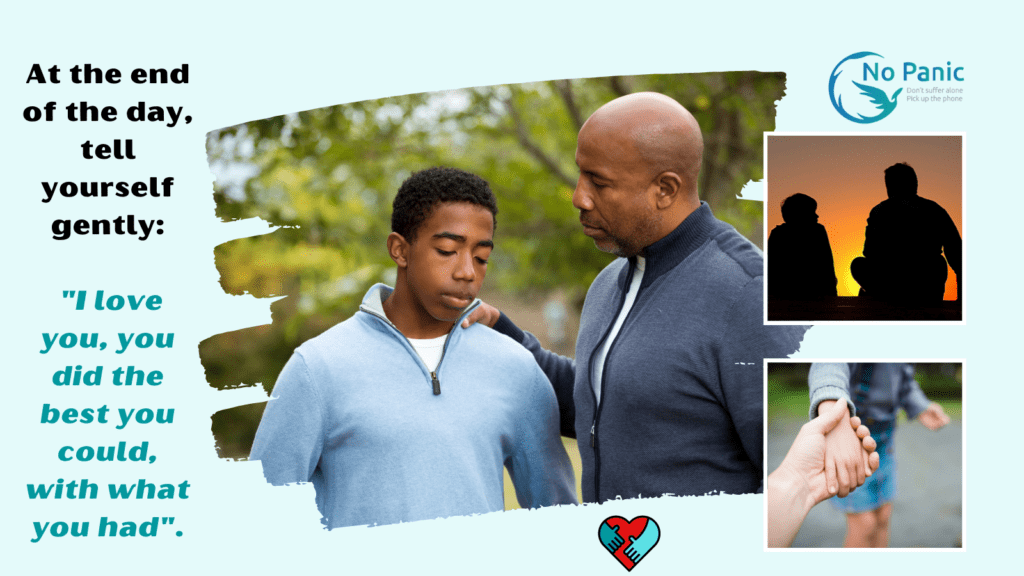Advice For Parents
Home / Advice For Parents
A Parents’ Guide to Anxiety in Young People
A certain amount of anxiety is completely normal in children. Examples might be: starting a new school, moving home, parents separating, etc. It is only when anxiety starts to affect a child’s everyday life that it becomes a problem and might be diagnosed as a disorder.
Symptoms of Anxiety in Children and Youths
- Difficulty to concentrate
- Upset tummy or a general feeling of unwellness.
- Refusing food or being ‘picky’
- Problems sleeping or waking in the night/nightmares
- Moodiness / temper tantrums
- Excessive worrying
- Being generally negative
- Shying away from company
- Upset or crying more than normal
- Toilet troubles
Do Anxiety Disorders in Young People Fade Away Naturally with Time?
It is fair to say that many children will grow out of their fears and worries. However, this is not always the case. If you are worried then it is a good idea to ask for help.
Where to Seek Help
- Your doctor.
- Teacher or headmaster/headmistress.
- School nurse.
- Local education authority (ask for the child psychology dept.)
- Charities like No Panic
- Local family health services authority.
First of all, let us reassure you if your child is living with an anxiety disorder – it is not your fault. You are not a bad parent nor have you done anything wrong. In the same way that you wouldn’t blame yourself for your child having tonsillitis. Don’t beat yourself up.
Secondly, anxiety can look very different depending on the child and the disorder so we’re going to quickly go through a handful of the most common manifestations.
Panic attacks
A panic attack is an exaggeration of the body’s normal response to fear. Your heart will start to beat faster, you will have trouble breathing and you may even feel like you are going to faint, have a heart attack, or even die. Panic attacks can happen anywhere and at any time. Although Panic attacks are extremely unpleasant they cannot harm you mentally or physically. Panic attacks may come out of the blue but they are always triggered by something. Finding the trigger will help you manage the attacks.
Obsessive-compulsive disorder
Obsessive-compulsive disorder happens when a child is plagued with intrusive thoughts such as catching or spreading germs, causing something bad to happen or causing a burglary. The compulsive side is the behaviour – washing hands, checking the oven is off, counting rituals or spending hours arranging and re-arranging.
Childhood phobias
A childhood phobia is an exaggerated, intense fear often characterised by a preoccupation with a particular object, surroundings, or situation that can quite often, lead to avoidance. Fear is a natural part of growing up, it helps children act with caution to stay safe. It is only when some kind of traumatic event or situation triggers panic and the child then attaches the terrifying symptoms they are experiencing with their surroundings, situation, or object around them that a phobia might develop. Children are all different, as are the phobias they may live with. They will vary in intensity and duration.
Emetophobia
This is a specific phobia to do with a fear of either yourself or others being sick, or both. Whilst we all may strongly dislike being sick, emetophobia is a more intense and extreme fear which can be linked to fear of ourselves or others losing control or feelings of disgust. People with emetophobia can be very anxious about picking up any illness that may be going around in case it makes them feel sick.
Some people may also be concerned about eating certain foods in case they start feeling sick again or if it brings on feelings of nausea. Some people may find that even the mention of certain words associated with being sick, can trigger their anxiety. Logically they may know there is no danger, but the fear can be so intense and real. The good news is that it is possible to overcome the phobia.
Selective mutism
Selective mutism is not a choice not to talk but a crippling anxiety disorder where children (and more rarely teenagers) feel unable to express themselves verbally.
An inability to speak in highly anxious situations is accompanied by other symptoms – from freezing completely to avoiding eye contact and becoming agitated. There are as many manifestations of selective mutism as there are people suffering from it.
Next Steps
So now we’ve done a quick tour around anxiety disorders, we can talk about steps to take. Of course your first reaction is to do everything possible to take away the anxiety because you love them and would do anything to rid them from this horrible disorder that is slowly taking over your family.
It is important to talk to your child about what they are experiencing and the challenges they are facing. Explain that you understand how they feel, but as mentioned above, you do not have to do this alone. It is at this stage that it is wise to visit your doctor and get a specialised opinion, if needs be even a referral.
Your GP should listen to your worries and decide what treatments will help. You may be referred to CAMHS (Children and Adolescents’ Mental Health Services) who can provide CBT (Cognitive Behavioural Therapy). This involves learning to tame the lion of anxiety with your invaluable help.
Quite often the waiting list to get specialised help can be extremely long which is where we can help. No Panic’s Youth One-to-One Mentoring Recovery Programme is a 6 week confidential course over the phone, for up to one hour per week with a No Panic Mentor. We use basic cognitive behavioural therapy techniques to help young people of different ages change their responses to fear. We explore tools and skills to help with anxiety management and explore interventions that young people can make in relation to changing their responses towards fear by using desensitisation techniques. The programme also focuses on goal setting. We work together with young people to look at all aspects of their life and, where appropriate, to identify the key goals that will improve their wellbeing and and support them to move forward. You can find out more here.
Another very important thing is looking after yourself. Battling an anxiety disorder in the family isn’t easy and it’s essential to make sure that you have some time out – whether that’s a long bubble bath with candles and your favourite music or meeting an understanding friend for a giggle and a chat, going for a run or enjoying a cold drink in the sunshine.
Most of all, remember that anxiety disorders can be recovered from. Give love, keep hope and remember you are not alone.

Search Products
Product Categories
- Books (12)
- CD (3)
- Information Booklets (18)
- Memberships (7)
- MP3 (4)
- Other (2)
- Support Services (14)
- Youth (3)
